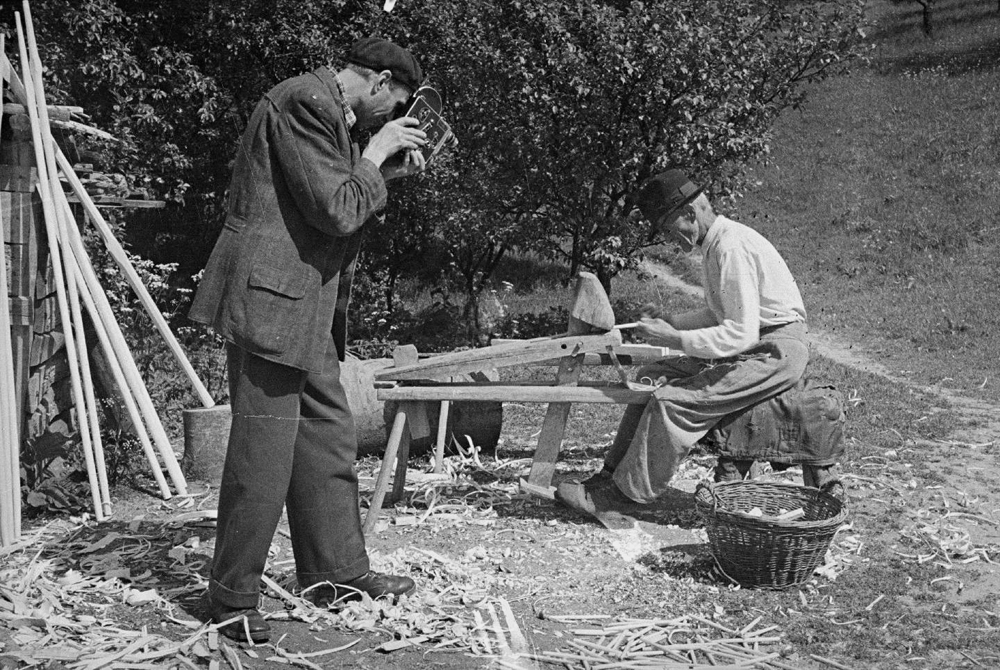Manuscript Collection: One of the Ethnological Archives’ largest and scientifically most significant collections. It contains every written document about Hungarian, European and non-European folk culture. The bulk of it was collected in the first part of the 20th century, but it also contains information about Hungarian folk culture after World War II. The collection contains documents from the 18th century through present-day. The main topics of this collections are agricultural cultivation, home furnishing, cuisine, clothing, textiles, etc., but the social changes, public law, public administration, folk beliefs and lore, folk poetry, writing, reading and education, nationalities etc., also represent the social changes in Rákosist and Kádárist Hungary.
2. Documentation Collection: The Documentation Collection includes all written and printed documents created during the history and course of the Museum of Ethnography. These are official and scientific documents, rather than historical-ethnographic manuscripts, from the 19th century until present day. This collection includes documents about exhibitions, conferences, programs, people, etc., and also about the Hungarian Institute of Sociology (which was abolished in 1949) and the Ministry of Interior.
3. Collection of Public Records: This collection was brought into being by the Hungarian Academy of Sciences' Eighth Scientific Directive of 1978 entitled, “A Complex Study of Our Historical and Cultural Memories and Traditions”. The purpose of the study was to collect and analyse the written resources of Hungarian rural life and village material culture. In the late 1970s, historical sources like documents of inheritances, lists of inheritances, the documentation of assets, testaments etc., gave a new perspective into Hungarian ethnographical research methods. In this collection we are able to find information on aristocratic families, as well as manors in the southern part of Hungary.
Half of the collection comes from the southern part of Hungary and places like Keszthely, Veszprém, Tata, while the other half is linked to rural towns like Kecskemét, Kiskunhalas, Mezőberény, and so on.
4. Photograph Collection: This collection includes images of ethnographic, ethnological and anthropological interest. These documents represent the ways of life of ethnic groups living in Hungary, the Carpathian Basin, and European and non-European countries from the second half of the 19th century through to the present. The collection was created in 1894. Hungarian ethnographers who had access to a camera (such as István Györffy, Sándor Gönyey, Vilmos Diószegi, Balázs Molnár, Béla Gunda, Tamás Hofer, etc.) used it widely in their fieldwork. They documented the changes in Hungarian society from the end of the 19th century through the 20th century. Therefore, the collection preserves documents from the communist regime until present-day.
5. Slide Collection: The Slide Collection was launched in 1961, although slides were gathered from different collections even in the 1950s. Most of the slides were taken between 1910 and the advent of World War II. The collection also contains slides of ethnological research projects (taken by Tibor Bodrogi in Indonesia, etc.). One of the most significant series of non-European subject material comprises slides taken in Papua New Guinea. In the 1970s, many slides were taken in Transylvania and in areas around Hungary. These slides show how folk culture changed during socialism.
During the 1980s and 90s, many slides were taken in cemeteries and about religious events in Hungarian and non-Hungarian areas.
6. Collection of Drawings, Paintings and Prints: This collection is a highly-varied composition in terms of subject material, artist and technique. The creators of the drawings, graphics, and paintings were professionals from the worlds of art and science. The painters represented include Árpád Feszty, Ákos Garay, István Zichy, and others. Some of the more prominent scientists whose works appear in the collection are Ottó Herman, János Xántus, Jenő Huszka, János Jankó, and István Györffy. This collection also documents changes in the life of peasants from the 19th century onwards.
7. Map Collection: This collection contains various printed and hand-drawn maps, including printed administrative maps from the 19th century until the present day, and numerous hand-drawn maps on various subjects. There are several unique and important pieces amongst the holdings, such as Ferenc Karacs’s 1813 Map of Hungary, and the 1850 series of cadastre maps produced by county assayers between 1856 and 1915. Unfortunately, the collection does not include the maps of the Ethnographic Atlas project begun in the 1950s.
8. Film and Video Collection: Researchers and filmmakers produced films during their fieldwork from the 1930s onward. The earliest Hungarian ethnographic film was shot by Ébner Sándor Gönyey in the 1930s. Most of the material in the collection was produced between 1940 and 1970, and is therefore especially valuable as it represents the changes in folk culture. The collection also includes many amateur recordings.
9. Audio Archive – The Folk Music Collection (audio materials and musical transcription).
The archive offers a wide range of textual folklore (folk tales, legends, superstitions, folk prayers, etc.), folk memoirs, melodies, oral history recordings, and interviews. This collection holds many records by Béla Bartók, Zoltán Kodály, and László Lajtha.
It also consists of collections of: phonograph cylinders, gramophone records, magnetic tape recordings, musical video recordings, digital compact discs, and folk music transcriptions.

